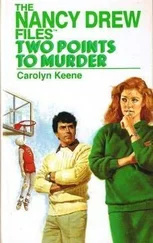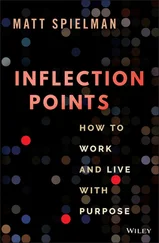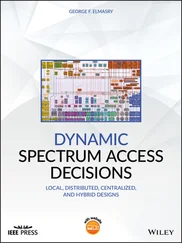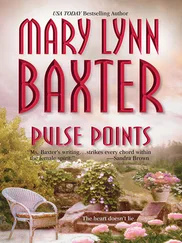In retrospect, I should have insisted on more debate on Jerry’s orders, especially on what message disbanding the army would send and how many Sunnis the de-Baathification would affect. Overseen by longtime exile Ahmed Chalabi, the de-Baathification program turned out to cut much deeper than we expected, including mid-level party members like teachers. It is possible we would have issued the orders anyway. They were tough calls, and any alternative would have created a separate set of problems. Had the Shia concluded that we were not serious about ending the era of the Baath Party, they may have turned against the coalition, rejected the goal of a unified Iraqi democracy, and aligned themselves with Iran. There is no way to know for sure what would have happened, but the discussion would have better prepared us for what followed.

The security situation continued to deteriorate over the summer. Iraq was becoming a magnet for extremists—Baathist insurgents, Fedayeen Saddam, foreign terrorists affiliated with al Qaeda, and, later, militant Shia and agents of Iran. These groups had different ideologies, but they shared an immediate goal: to drive America out of Iraq. They knew they could never win a direct fight against our troops, so they deployed roadside bombs and attacked nonmilitary targets such as the Jordanian embassy and the UN complex in Baghdad. Another tactic was to kidnap reconstruction workers and execute them in grisly Internet videos. Their strategy was to present an image of Iraq as hopeless and unwinnable, swinging American public opinion against the war and forcing us to withdraw as we had in Vietnam.
To an extent, they succeeded. It was difficult for the average American to differentiate the twisted terrorists from the millions of ordinary Iraqis who were grateful for liberation. We tried to get the good news out—the relative calm in the Kurdish north and Shia south, the rebuilding of schools and hospitals, and the training of a new Iraqi army. But in the eyes of the media—and, therefore, of the public—none of this quiet progress could compete with the bombings and the beheadings.
In early July, a reporter asked me about attacks on our troops. “There are some who feel like that if they attack us that we may decide to leave prematurely,” I said. “… My answer is: Bring ’em on.”
Anytime I spoke on Iraq, there were multiple audiences listening, each of which had a different perspective. I thought about four in particular.
The first audience was the American people. Their support was essential to funding and fighting the war. I believed that most Americans wanted to win in Iraq. But if the cost seemed too high or victory too distant, they would grow weary. It was important for me to reinforce the importance of the cause and our determination to prevail.
The second audience was our troops. They had volunteered to serve and were risking their lives far from home. They and their families needed to know I believed in them, stood firmly behind their mission, and would not make military decisions based on politics.
The third audience was the Iraqi people. Some wanted us gone, but I was convinced that the vast majority of Iraqis wanted us to stay long enough to help a democratic society emerge. It was important that I communicate my resolve to complete the work we had begun. If Iraqis suspected we were going to abandon them, they would turn to other sources of protection.
The final audience was the enemy. They believed their acts of savagery could affect our decisions. I had to make clear they never would.
My “bring ’em on” comment was intended to show confidence in our troops and signal that the enemy could never shake our will. But the firestorm of criticism showed that I had left a wrong impression with other audiences. I learned from the experience and paid closer attention to how I communicated with each audience in the years ahead.

By the fall of 2003, the international coalition in Iraq was comprised of ground forces from thirty countries, including two multinational divisions led by Great Britain and Poland, and logistical support from many others. Coalition forces had discovered torture chambers, rape rooms, and mass graves containing thousands of bodies. They found a facility containing state-of-the-art hazmat suits and syringes with the antidote for VX nerve agent. But they had not found the stockpiles of biological and chemical weapons that virtually every major intelligence agency in the world believed Saddam had.
When Saddam didn’t use WMD on our troops, I was relieved. When we didn’t discover the stockpile soon after the fall of Baghdad, I was surprised. When the whole summer passed without finding any, I was alarmed. The press corps constantly raised the question, “Where are the WMD?”
I was asking the same thing. The military and intelligence teams assured me they were looking constantly. They examined hidden sites Saddam had used during the Gulf War. They collected intelligence and responded to tips. At one point, the CIA heard that large canisters had been spotted from a bridge over the Euphrates River. Navy frogmen deployed to the scene. They found nothing. A high-ranking official from the United Arab Emirates brought drawings of tunnels he believed Saddam had used to hide weapons. We dug up the ground. Nothing materialized.
George Tenet recruited David Kay, the UN’s chief weapons inspector in Iraq in 1991, to lead a new inspections team. Kay conducted a thorough search of Iraq and found irrefutable evidence that Saddam had lied to the world and violated Resolution 1441. “Iraq’s WMD programs spanned more than two decades, involved thousands of people, billions of dollars, and were elaborately shielded by security and deception operations that continued even beyond the end of Operation Iraqi Freedom,” he told Congress in October 2003. But there was one thing Kay did not find: the WMD stockpiles everyone expected.
The left trotted out a new mantra: “Bush Lied, People Died.” The charge was illogical. If I wanted to mislead the country into war, why would I pick an allegation that was certain to be disproven publicly shortly after we invaded the country? The charge was also dishonest. Members of the previous administration, John Kerry, John Edwards, and the vast majority of Congress had all read the same intelligence that I had and concluded Iraq had WMD. So had intelligence agencies around the world. Nobody was lying. We were all wrong. The absence of WMD stockpiles did not change the fact that Saddam was a threat. In January 2004, David Kay said, “It was reasonable to conclude that Iraq posed an imminent threat. … What we learned during the inspection made Iraq a more dangerous place potentially than in fact we thought it was even before the war.”
Still, I knew the failure to find WMD would transform public perception of the war. While the world was undoubtedly safer with Saddam gone, the reality was that I had sent American troops into combat based in large part on intelligence that proved false. That was a massive blow to our credibility—my credibility—that would shake the confidence of the American people.
No one was more shocked or angry than I was when we didn’t find the weapons. I had a sickening feeling every time I thought about it. I still do.

While the fight in Iraq was more difficult than I expected, I remained optimistic. I was inspired by the courage of the one hundred thousand Iraqis who volunteered to join their security forces, by leaders who stepped forward to replace members of the Governing Council who had been assassinated, and by ordinary people who longed for freedom.
Читать дальше












